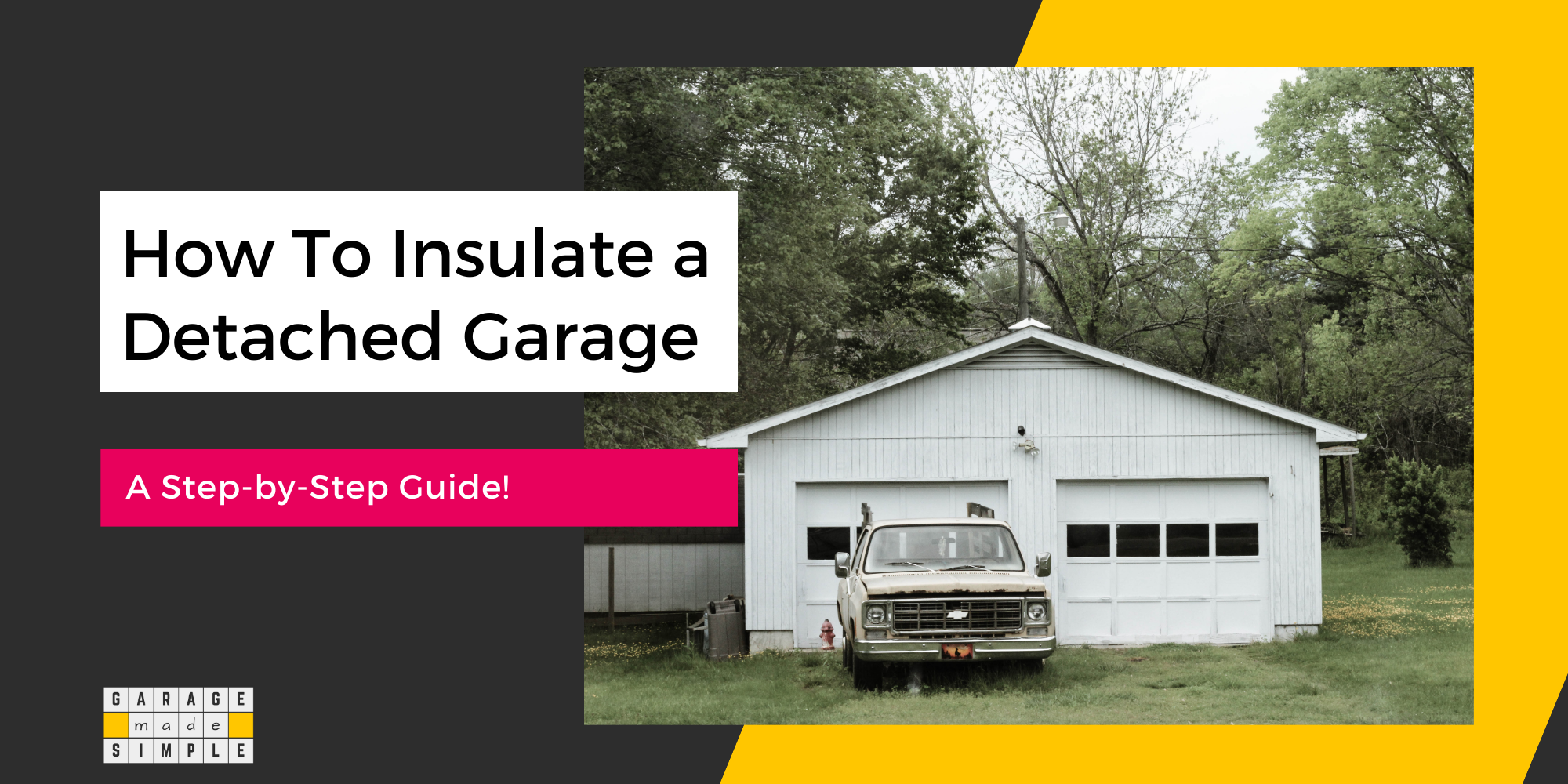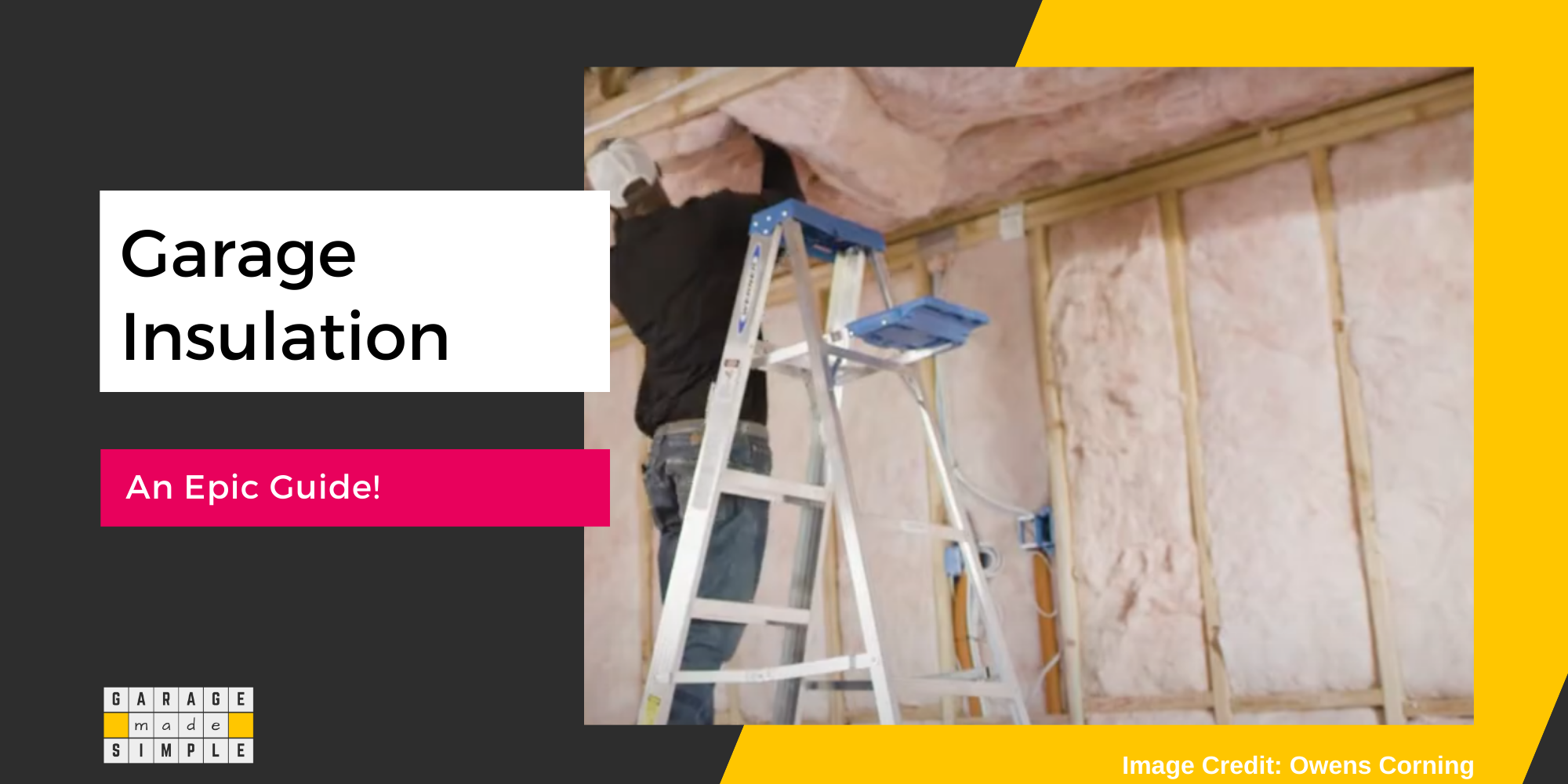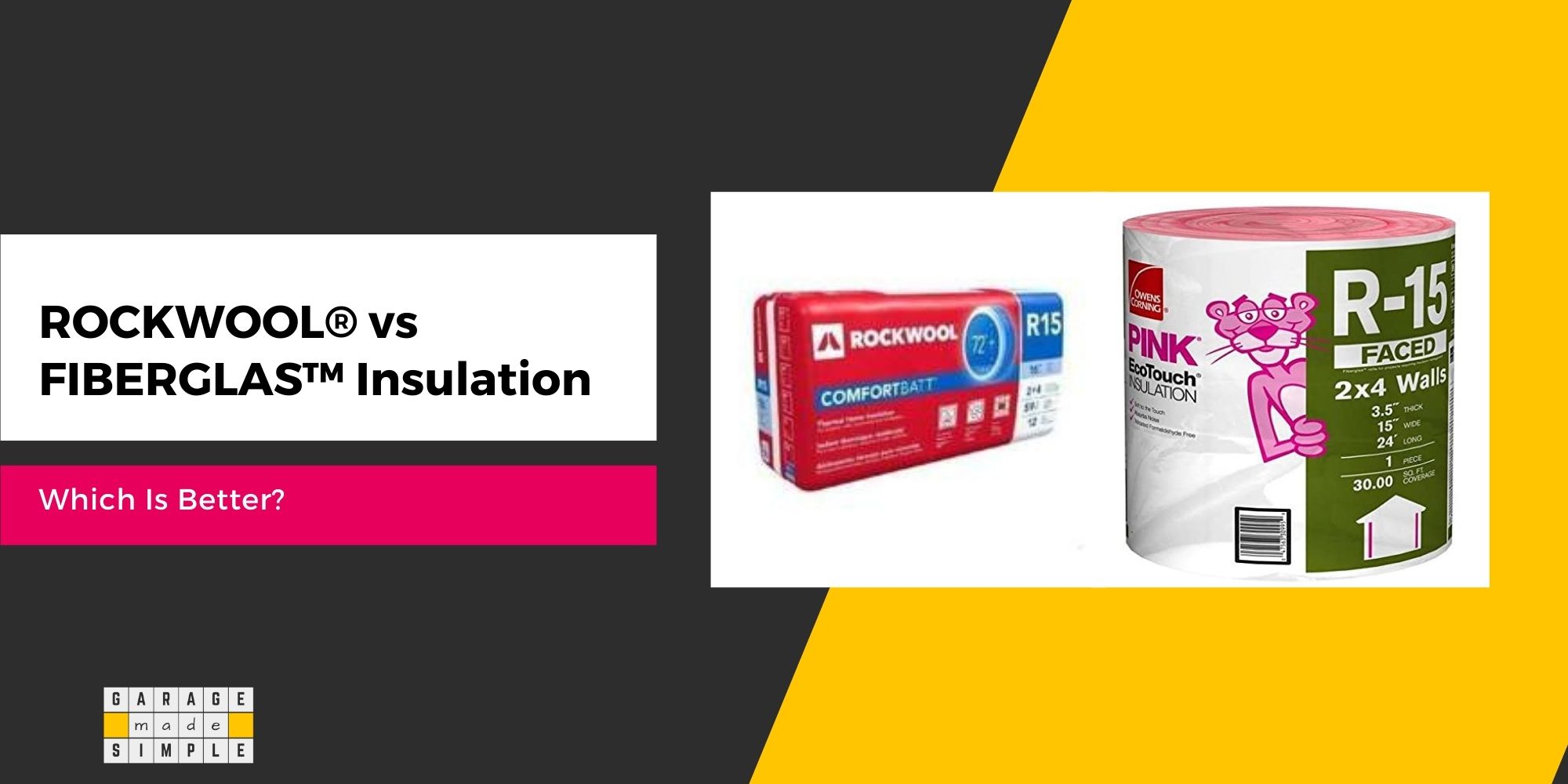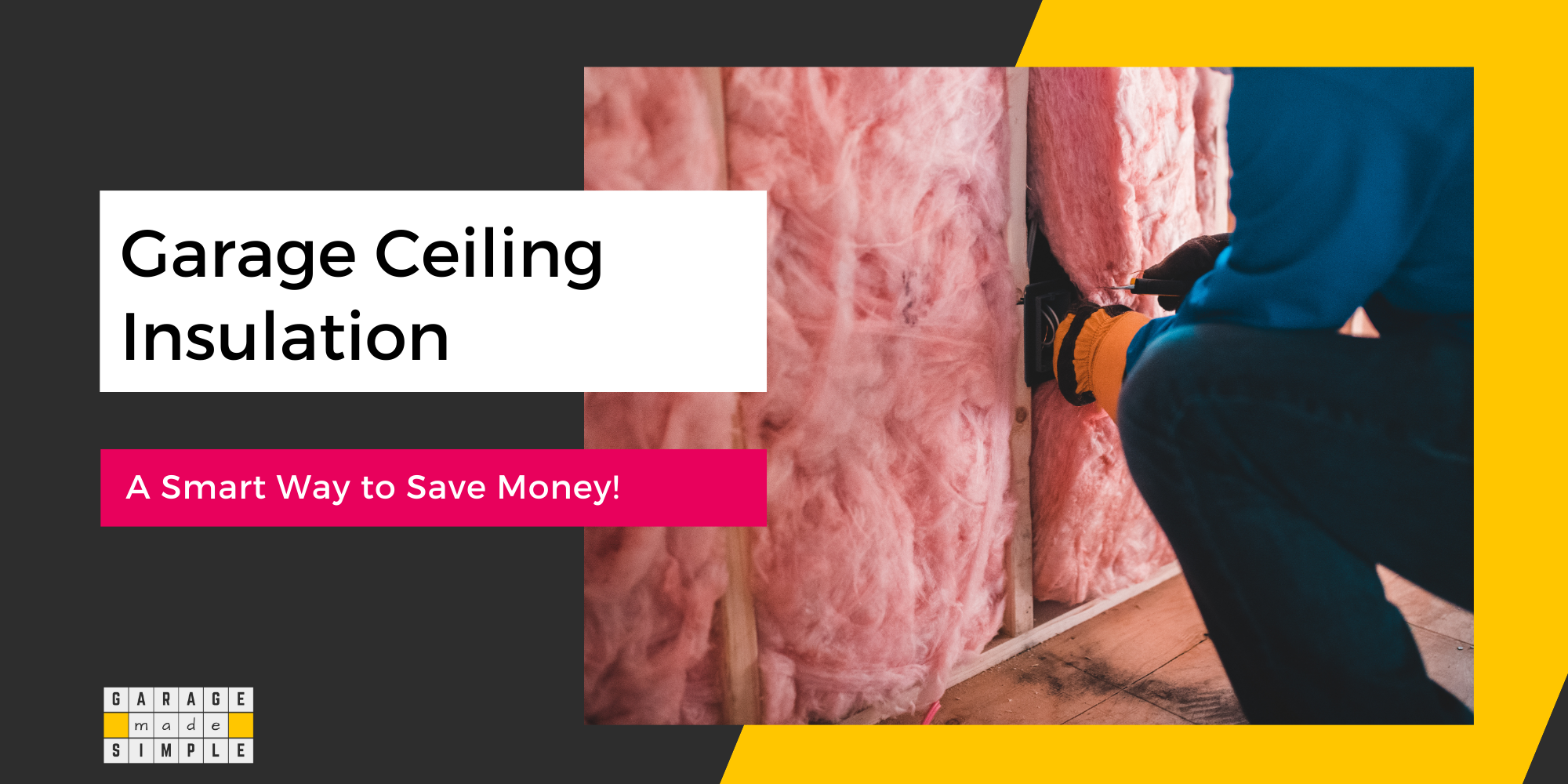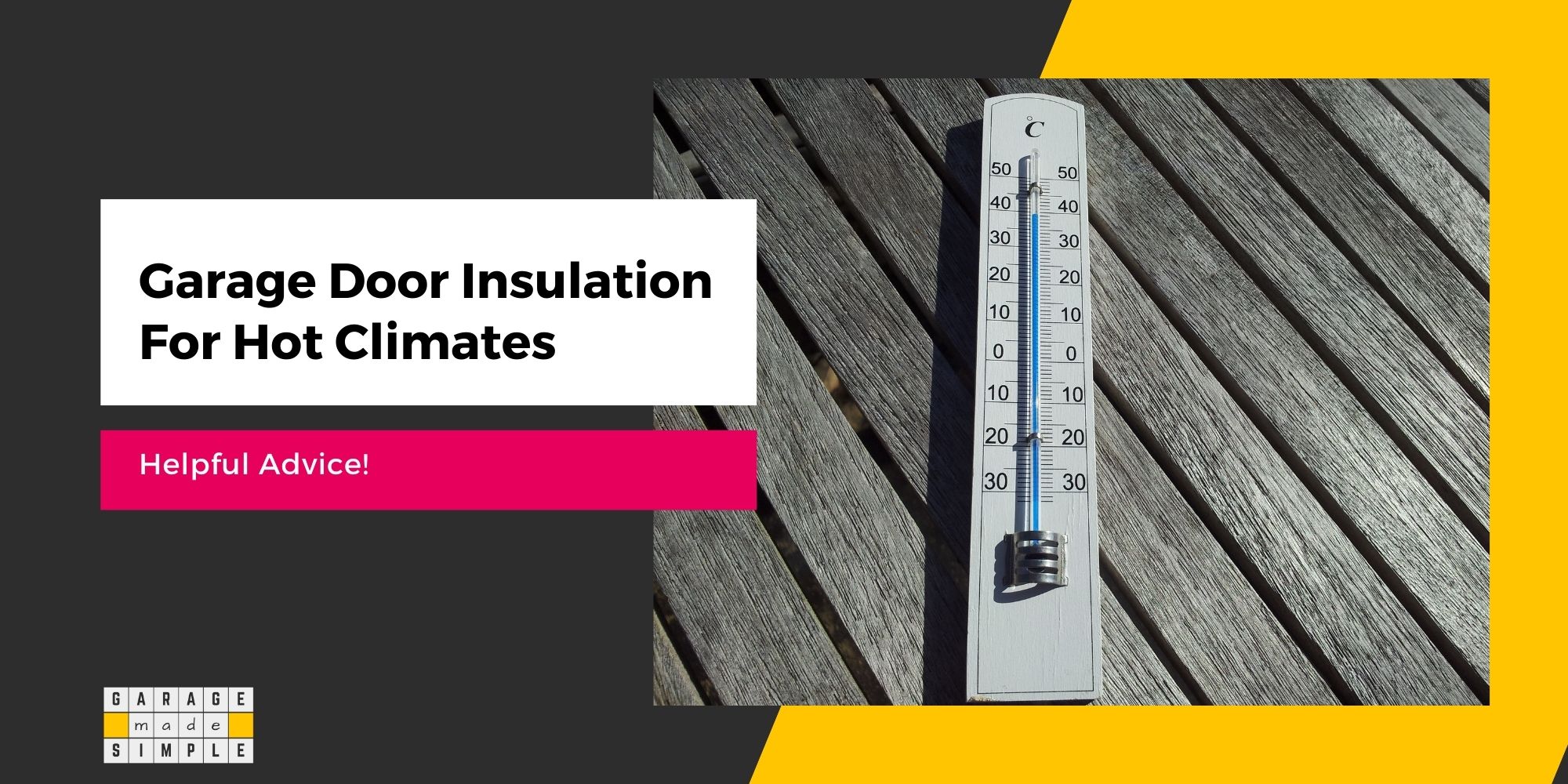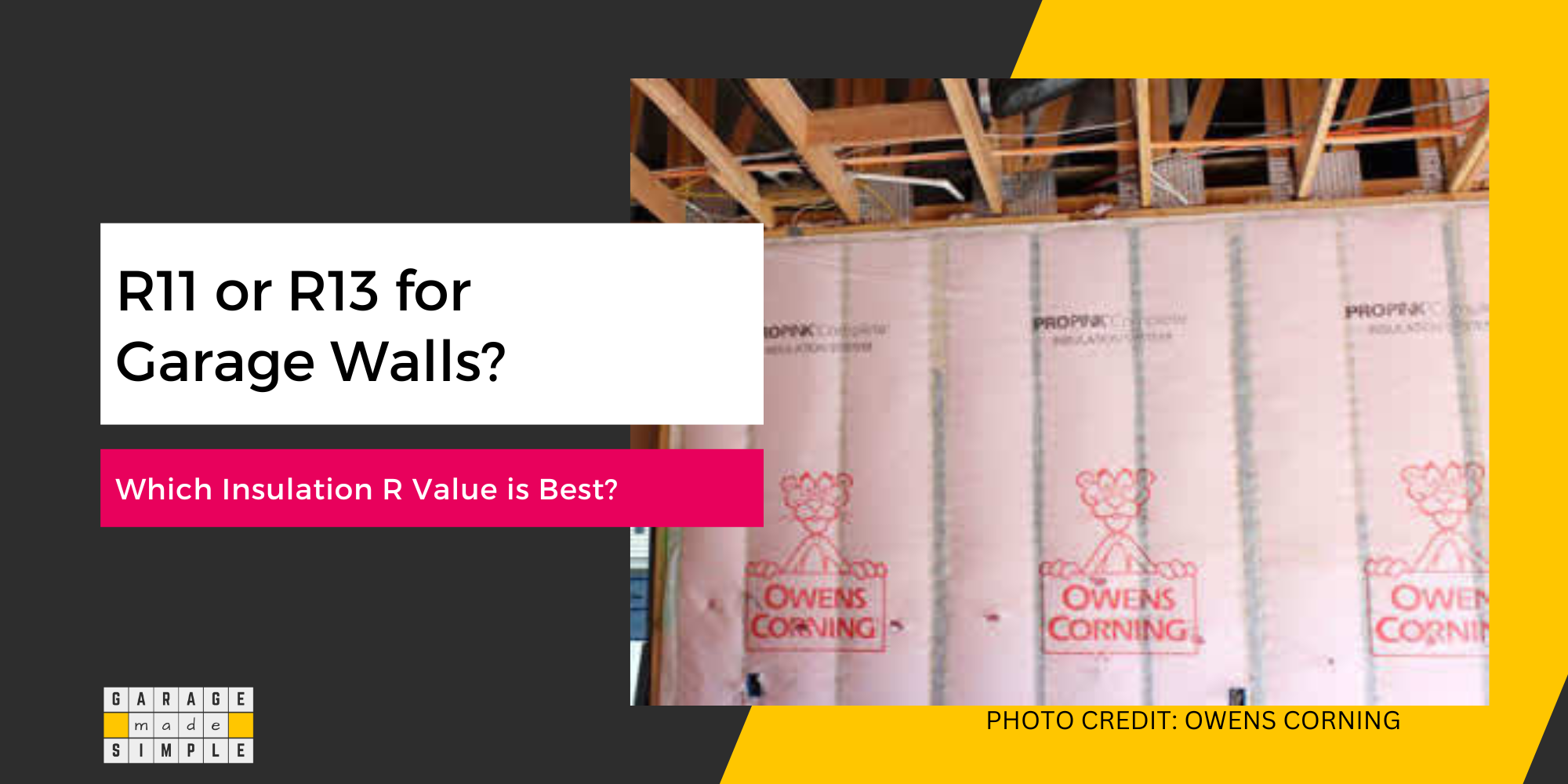Insulating Garage Walls Without Drywall: A Comprehensive Guide
As an Amazon Associate, I earn from qualifying purchases.
Can You Insulate a Garage Without Drywall?
Yes, you can insulate a garage without drywall. Insulating garage walls without drywall may not be the best idea out there, but it certainly is better than not insulating at all!
If you think hard, you will realize that insulating garage walls and drywalling garage walls serve two different objectives.
Insulation makes the garage comfortable and reduces energy bills. Drywall makes the garage walls fire-resistant, increases safety and makes the garage look livable.
One can be done without the other, but I admit that they are usually done together and I even recommend it. Check out my earlier post Top 10 Reasons Why You Should Insulate and Drywall Your Garage.
Winter’s coming, and insulation’s on your mind. But what about your garage without drywall? Insulating garage walls without drywall is possible and in this post I am going to tell you about the importance of insulating a garage, particularly an attached garage.
I will also share with you different techniques of insulating garage walls without drywall. All of it is practical actionable advice. Not all techniques will look great but some will actually look and work even better than drywall.
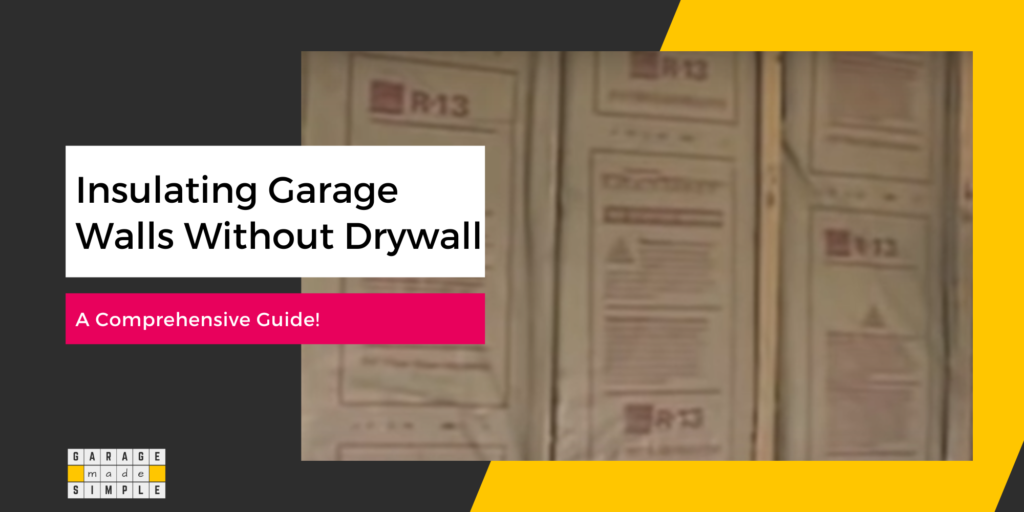
Why Insulating Garage Walls Without Drywall is Important?
Garage wall insulation matters, especially if you’re heating the space. In cold climates insulting the walls of an attached garage is just as important as insulating your home.
If the attached garage is not well insulated you will lose a substantial amount of your home heat through the garage. You will either end up paying higher energy bills or having a pretty uncomfortable winter.
There are plenty of Reasons Insulating An Unheated Detached Garage Is Important as well. Quite often you might use part of your detached garage as a workshop or a gym. Whatever the intended use, you do want the detached garage to be as comfortable as possible.
More than just comfort and reduced energy bills, insulating garage walls goes a long way in enhancing the lifespan of cars, sporting equipment and other items that you tend to store in your garage.
We generally think that garage insulation is only necessary and important in cold climates. Not true! Garage insulation can be equally important in warm climates.
Remember, insulation is neither a heater nor an air conditioner. It just reduces the rate of heat flow from a warm zone to a cold zone.
So in winter, it reduces the flow of heat from inside the garage to the cold outdoors and reduces the cost of heating the garage and the house, in case of an attached garage.
In summer it reduces the flow of heat from the hot outdoors into the garage and ultimately into the house, in case of an attached garage. This helps in reducing the cost of air conditioning in the house.
In short, unless you live in a goldilocks zone where the temperatures are between 65°F (18°C) and 80°F (27°C), everyday of the year, you are better off insulating your garage.
What Are Garage Wall Insulation Options?
There are 4 different materials that can be used for insulating garage walls, with or without a drywall.
However, even before you start on the garage wall insulation you have to make sure that all gaps and cracks through which air can leak is sealed.
Pay attention to weatherstripping along garage doors, windows, and frames. Most of the garage heat is lost due to conduction or through convection.
Insulation will take care of heat loss due to conduction but you need to minimize heat loss due to convection by sealing air gaps.
Now back to garage wall insulation options.
1. Fiberglass Insulation
Fiberglass Insulation is your go-to for garage wall frames. It’s cost-effective and easy to handle. Available in batts and rolls, it’s a staple in homes and garages.
Paper-faced fiberglass insulation is terrific for insulating garage walls without drywall. Not only does it insulate, it even gives a slightly polished look.
So, if you were to use paper-faced fiberglass insulation batts and have a way of securing them in the garage wall stud gap, you can get away without drywalling your garage.
It won’t look great but it won’t look too bad either!
Owens Corning R 15 Kraft Faced Fiberglass Batt Fits 2X4 Stud Walls
Owens Corning 678 SQFT 10 Bags of R 15 Kraft Faced 15 by 93 Fiberglass Batt Fits 2X4 Walls
Owens Corning EcoTouch PINK Fiberglass Insulation with PureFiber Technology is a preformed, flexible blanket insulation. It is produced in R-values from 11 to 49, with thicknesses ranging from 31/2 inches to 14 inches. It is available unfaced, or faced with either a kraft or foil vapor retarder.
2. Cellulose Insulation
Cellulose Insulation is best suited for finished garage walls and ceilings. It’s an eco-friendly choice, made from recycled materials and fire-resistant.
On the flip side it is expensive and will need a drywall or a sheathing such as plywood, OSB, etc. to contain it.
3. Rigid Foam Insulation
Rigid Foam Insulation is perfect for thin walls and garage doors, offering high R-value and noise reduction. The versatility in cutting it to fit various spaces makes it an attractive option.
Since it is rigid and has a fairly smooth face, it can be used for insulating garage walls without drywall, just like paper-faced fiberglass insulation.
On the flip side, due to its rigidity, navigating around wiring and pipes can be a challenge. Unless you make the effort to seal all the gaps, you may end up losing a considerable amount of heat due to air movement.
Insect intrusion through the gaps will be another problem. You may find your garage infested with ants or cockroaches.
4. Spray Foam Insulation
Spray Foam Insulation is a premium choice for those converting garages into living spaces. It excels in air sealing and energy efficiency.
The spray foam is quite stable after it solidifies and does not require a drywall or other sheathing material to hold it in place. You could even paint over it to make your garage look quite pretty.
However, be prepared for the higher cost. Not only is the product more expensive, it typically requires professional installation for optimal results.
In Summary:
| Insulation Type | Suitable For | Pros | Cons |
| Fiberglass Insulation | Garage wall frames | Cost-effective, easy to handle | No need for drywall, but appearance may be suboptimal |
| Cellulose Insulation | Finished garage walls & ceilings | Eco-friendly, fire-resistant | Requires drywall/sheathing, can be costly |
| Rigid Foam Insulation | Thin walls, garage doors | High R-value, noise reduction, versatile | Challenges around wiring, potential insect intrusion |
| Spray Foam Insulation | Converting garages to living spaces | Excellent air sealing, energy-efficient | Higher cost, professional installation often needed |
When it comes to insulating garage walls without drywall, fiberglass batts are your best bet. But proper installation is key.
Seal all gaps, ensure snug fit between studs. Choose between tabbed and friction-assisted batts, depending on your needs.
How to Hold Insulation Without Drywall?
When insulating garage walls without drywall, the challenge is to hold the insulation without using drywall or any other covering material such as plywood.
Here are some simple ways that work, especially with paper-faced fiberglass batts:
Double Sided Mounting Tape
Use Heavy Duty Double Sided Mounting Tape (3M). This tape is ½” wide and has a strong resistance to moisture, humidity and extreme temperatures, making it suitable for both indoor and outdoor use. (Also available in ¼” and 1” widths).
This foam tape is easy to install. Just peel off the tape and stick it to the surface of the paper-faced fiberglass batts. It is easy to reposition when it’s not fully compressed and repositioning will not influence adhesion durability.
It bonds quickly and securely when it’s fully compressed. No drilling, no screwing, no heating.
Silver Aluminum Foil Tape
Unlike the double sided adhesive tape, the Silver Aluminum Foil Tape (3M) will not be hidden from view. On the other hand it will be cheaper and easier to install.
When done with skill, a pleasing and even a useful visual pattern can be created. You could, for example, place the tape over the insulation joints so that the insulated garage walls actually look pretty neat and seamless.
This silver aluminum foil tape can withstand flames, UV degradation, weathering, and chemicals. The tape also has very low water vapor transmission and is excellent for moisture sealing applications.
This silver aluminum foil tape is widely used in the HVAC industry for sealing insulations and to shield, patch or seam insulation sheets and surfaces.
Micro Pinning
You can use a micro pinner such as NuMax SP123 Pneumatic 23-Gauge 1″ Micro Pin Nailer to drive the 1” micro pins through the Paper-faced Fiberglass Batts or the Rigid Foam Insulation to attach them to the wood studs.
You could use a staple gun with 1″ staples as well.
Insulation Hangers
Garage wall studs are typically 16″ OC apart. Insulation Hangers are stiff wires that are pre-cut to the required length. Chisel cut ends dig into studs for permanent holding.
Fencing Wire Mesh
You could use fencing wire mesh that is attached to the garage wall studs over the insulation, like a net. The great benefit of this technique is that it will work for all types of insulation materials.
There are many materials and mesh sizes to choose from, but I find that Fencer Wire 23 Gauge Galvanized Hardware Cloth with Mesh Size 1/4″ x 1/4″ (4 ft. x 50 ft.) is quite affordable and effective. Looks reasonably good too!
Slatted Wall Panels
You could use Slatted Wall Panels strategically on some sections of the garage wall to hold the insulation in place. The added benefit is that now you have a convenient place to hang your DIY tools or garden implements!
Check out Preboun Slatted Wall Panels which are not only affordable but also very conveniently sized at 3’X1’. These slatted wall panels, made of quality PVC are fireproof, waterproof, fade-resistant and will not crack or peel over time.
The Preboun Slatted Wall Panels are very easy to install. All you need is a few screws to fix the slatted storage wall to the wood studs.
It is up to you to figure out what works best for you and still falls within your budget. Personally, I would choose a combination for best results.
How to Cover Exposed Garage Wall Insulation?
In the section above, I have given you 6 ways to hold garage wall insulation, without completely covering it. Now if you are interested in completely covering the exposed garage wall insulation, then there are quite a few options.
Drywall is possibly one of your best options. There are 10 excellent reasons to drywall a garage:
- Relatively Fire Resistant (Code Compliant)
- Covers up the Insulation
- Low Cost
- Hides Plumbing & Wiring
- Adds Color & Brightness
- Makes the Garage Livable
- Will Help Reduce Noise
- Easier to Work With
- Easy to Patch Up
- Improves Resale Value
To be fair it does have a few negatives that you must be aware of.
For one it has low impact resistance. Even a small hit and you end up with a hole that needs to be patched up.
Another problem with drywall is that it is hygroscopic and will absorb water if your garage floor gets flooded. A wet drywall promotes mold and mildew growth. Moreover, it also loses structural stability and could crumble.
To find out more about using drywall in a garage check out my earlier blog post, 10 Reasons Why It Is Better To Drywall A Detached Garage.
Now if you still want to cover exposed garage wall insulation completely and prefer not to use drywall, you do have quite a few other options. However, before you use any of them, be aware of the Code.
The 2021 International Residential Code (IRC)
For those of you who would like all the references, Section R302.6 of The 2021 International Residential Code (IRC) is relevant to the Dwelling-Garage Fire Separation.
R302.6 Dwelling Garage Fire Separation (applies to adjoining Garage Walls & Ceilings) states that
The garage shall be separated as required by Table R302.6. Openings in garage walls shall comply with Section R302.5. Attachment of gypsum board shall comply with Table 702.3.5. The wall separation provisions of Table 302.6 shall not apply to garage walls that are perpendicular to the adjacent dwelling unit wall.
Table R302.6
| Separation | Material |
| From the residence and attics | Not less than ½-inch gypsum board or equivalent applied to the garage side |
| From all habitable rooms above the garage | Not less than 5⁄8 -inch Type X gypsum board or equivalent |
| Structure(s) supporting floor-ceiling assemblies used for separation required by this section | Not less than ½-inch gypsum board or equivalent |
| Garages located less than 3 feet (914 mm) from a dwelling unit on the same lot | Not less than ½-inch gypsum board or equivalent applied to the interior side of exterior walls that are within this area |
Reference: Code for Drywall in a Garage: A Comprehensive Guide. Note that the code is NOT APPLICABLE to detached garage walls or even walls in an attached garage that are not between the home and the garage.
As long as you are not in violation of the Code you can consider using any of the options listed below.
- Plaster
- Cement Board
- Plywood
- Oriented Strand Board (OSB)
- Metal Panels
- PVC Wall Panels
- Wood (Shiplap)
- Fiberglass Reinforced Panels (FRP)
- Slat Wall (Pegboard)
There are a few more options that you could consider, such as, Medium-Density Fiberboard (MDF), Brick, Heavy Fabric, etc.
Cement Board followed by OSB & Plywood are the best & most practical alternatives to drywall for garage walls.
Check out my earlier blog post 9 Alternatives To Drywall Garage Walls: What is Practical & Best? for more details!
Thank you very much for reading the post. I do hope you found it informative and useful.



